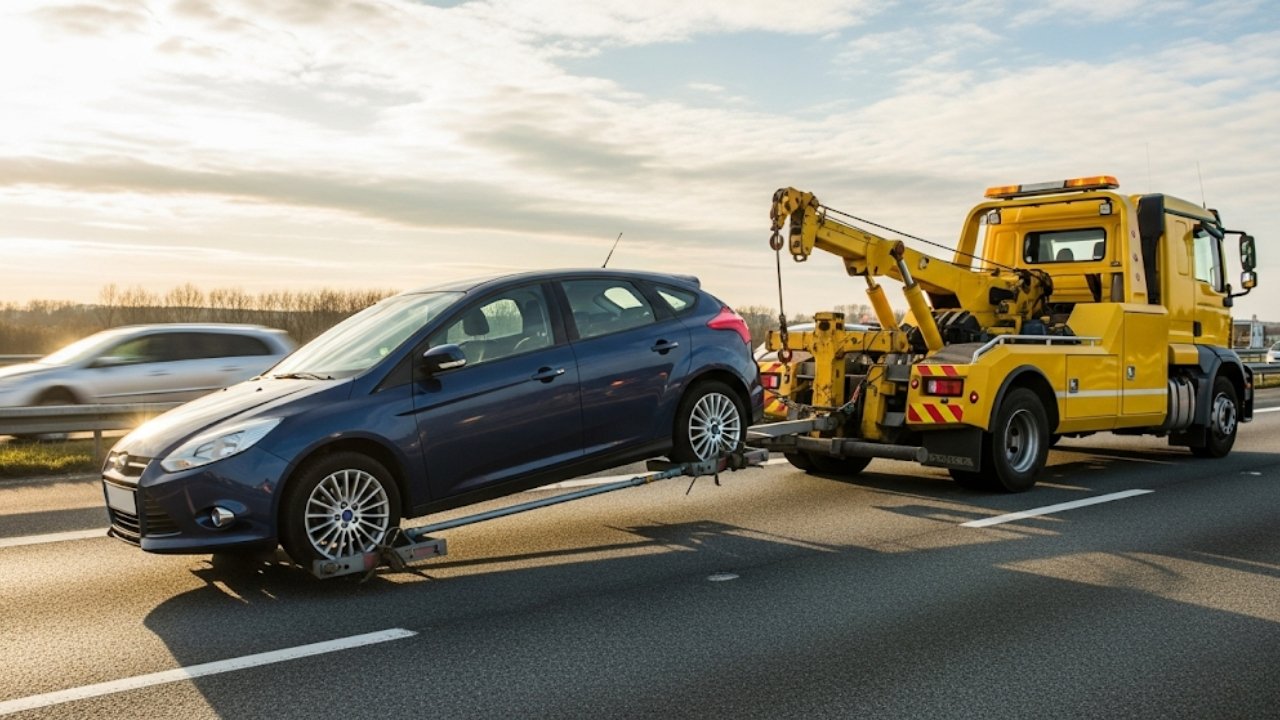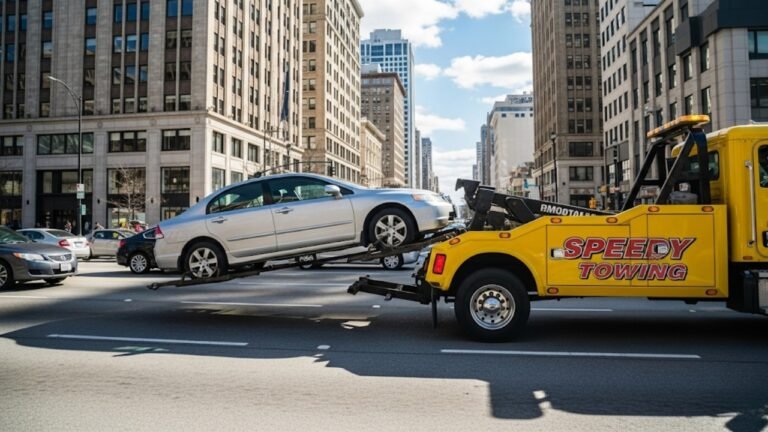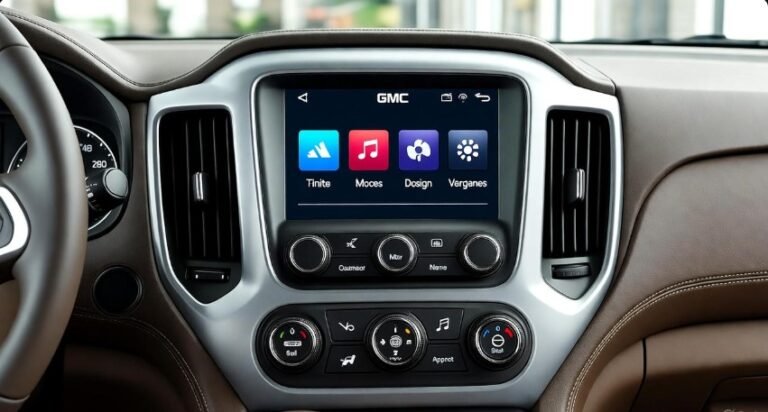The Smart Guide to Towing a Car with a Tow Pole

You’re on a lonely road, it’s raining lightly, and your car just decided it’s done for the day. No engine light warning, no funny noises before—just silence. You pop the hood, jiggle a few wires like a pro (because hey, YouTube taught you a few things), but no luck. Then a friend shows up and says, “Let’s tow it with a tow pole.”
That moment is real. It happens more often than you’d think. In that pinch, towing a car with a tow pole becomes not just a handy trick—it’s a lifesaver.
In this guide, we’ll talk about the nitty-gritty of how to use a tow pole safely, efficiently, and legally. But we’ll do it like two friends chatting over tea—less jargon, more stories, more real-world smarts.
What Is a Tow Pole? And Why Should You Even Care?

Unlike soft straps or chains, a tow pole doesn’t slack. That means smoother stops, safer steering, and less neck-whipping motion for the towed car. It’s like holding hands instead of dragging someone by the wrist.
Why it matters:
-
You avoid rear-end collisions during braking.
-
Less strain on the front and rear of both vehicles.
-
Keeps you within many legal guidelines.
In short: if you must tow a car yourself, a tow pole is your safest bet outside of calling professionals.
Key Benefits of Towing a Car with a Tow Pole
Let’s break this down, friend-to-friend. Here’s why people swear by towing a car with a tow pole instead of ropes or chains:
✅ Safety
-
A tow pole maintains a fixed distance.
-
It eliminates sudden jerks during starts or stops.
-
Less risk of the towed car rear-ending the lead car.
✅ Legal Compliance
-
Many states and countries allow poles where straps or ropes are banned.
-
Fewer chances of getting pulled over or fined.
✅ Control
-
The driver in the towed car has better control of steering.
-
You get more predictable movement, especially in turns or on hills.
✅ Durability
-
Steel poles don’t snap.
-
Weather conditions don’t affect them like wet or worn ropes.
Here’s a quick table comparing different towing methods:
| Method | Safety | Legal Acceptance | Durability | Skill Required |
|---|---|---|---|---|
| Tow Rope | Low | Often restricted | Low | High |
| Tow Chain | Medium | Sometimes allowed | Medium | High |
| Tow Pole | High | Widely accepted | High | Moderate |
If you’re serious about doing it right, towing a car with a tow pole is the gold standard for DIY roadside rescues.
The First Rule: Never Rush Tow Pole Setup
Ever seen someone “wing it” with a metal bar and duct tape? Yeah, don’t be that guy. Setting up a tow pole properly is 80% of the job.
Here’s the smart way to do it:
1. Position the Cars
Line both cars up nose-to-tail. They should be as straight as possible to avoid tugging at awkward angles.
2. Attach the Tow Pole to the Towing Vehicle
Most poles come with hooks or shackles. Fasten them tightly to the tow bar or hitch point of the lead car. Don’t just loop it around anything that looks solid.
3. Connect to the Towed Car’s Mount Point
Use the car’s designated recovery hook or front subframe if available. No hook? Check under the bumper for a metal loop (many cars have them).
4. Double-Check Alignment
The pole must be horizontal and centered. If it’s at an angle, it could bend or shift during motion.
5. Test the Movement
Move forward a few inches and stop. Both vehicles should roll smoothly with no sharp jolts. This step tells you if the connection is solid.
Pro Tip: Never use bungee cords, ropes, or improvised gear with a tow pole. Only trust rated equipment.
Can You Tow Any Car with a Tow Pole?
Good question. The answer: not always.
Let’s explore the types of vehicles that can be safely towed this way and those that can’t.
✅ Safe to Tow with a Tow Pole
-
Manual transmission cars
-
Rear-wheel drive (RWD) vehicles (if the rear wheels are on the ground)
-
Cars with neutral gear and accessible tow points
⚠️ Tread Carefully
-
Front-wheel drive (FWD) cars may need the front wheels lifted
-
Automatic transmission vehicles can suffer damage if towed long distances
-
Electric vehicles (EVs) often have towing restrictions
Golden rule: Always check the owner’s manual before attempting towing a car with a tow pole. Some vehicles require flatbeds or dollies.
What It Feels Like Behind the Wheel of a Towed Car
If you’ve ever sat in a towed car with your hands sweaty on the wheel, you know it’s not a joyride. You feel every move the lead driver makes. You’re the tail, and you’ve got to follow every wag.
Here’s what to expect:
-
No power steering: You’ll need muscle to steer.
-
No brakes: Unless the engine’s running, your braking power is limited.
-
Watch the lead car’s brake lights like a hawk.
It’s nerve-wracking at first. But with clear hand signals or walkie-talkies, the experience becomes much smoother.
Do You Need a Spotter or Communication Plan? Yes, Absolutely!
This part is huge. If you’re towing a car with a tow pole, communication can’t be an afterthought. Imagine trying to stop in sync, make turns, or avoid potholes—all without talking. It’s a recipe for disaster.
Here’s how to stay connected:
-
Use walkie-talkies: They work even if there’s no cell signal.
-
Set up hand signals: One for stop, one for slow down, one for “everything’s fine.”
-
Agree on the route: Discuss the full journey before moving an inch.
-
Drive slowly: Under 25 mph is ideal, especially in city areas.
Remember, towing isn’t just about strength—it’s about teamwork.
When You Should Not Tow with a Tow Pole
Let’s be honest. Sometimes it’s just not safe to use a tow pole. And admitting that can save you thousands in repairs—or worse, a major accident.
Don’t do it if:
-
The towed car’s brakes or steering don’t work
-
You’re on steep inclines or slippery roads
-
The tow pole is damaged, bent, or rusted
-
Traffic is too heavy or fast
In those moments, call for a flatbed. It might cost more, but it keeps everyone safe.
How to Tow Like a Pro (Even if It’s Your First Time)
Want to avoid that “jerky” first tow experience? Follow these quick pro tips:
️ Tow Pole Tips for First-Timers
-
Don’t slam on the brakes. Slow, gradual stops prevent collisions.
-
Avoid sharp turns.
-
Give the towed car extra time to react.
-
Always keep hazard lights on.
-
Stay on the right lane unless turning.
These small things go a long way when towing a car with a tow pole, especially if it’s your first time.
Common Mistakes to Avoid When Towing with a Tow Pole
Let’s get real—nobody’s perfect. But if you can avoid these rookie mistakes, you’ll save yourself a world of stress.
What Not to Do:
-
Forgetting to put the towed car in neutral (yes, it happens more than you’d think!)
-
Using a damaged or too-short tow pole
-
Not checking for local towing laws
-
Skipping the test pull
-
Not turning on hazard lights on both vehicles
These may seem small, but they’re the stuff roadside horror stories are made of.
Legal Guidelines for Towing with a Tow Pole (Don’t Skip This!)
Before you hit the road, stop and ask yourself: Is towing with a tow pole even legal where I am? The answer might surprise you.
Towing laws vary from country to country—and even between states. What’s okay in Texas might earn you a ticket in California.
Here’s what you need to know:
Common Legal Requirements:
-
Tow bars must be rigid (no chains or ropes in most areas)
-
Maximum towing speed limits apply (often 25–40 mph)
-
Hazard lights must be used on both vehicles
-
Tow vehicle must be rated to pull the weight of the towed car
-
No passengers allowed in the towed vehicle in some states
Check the Department of Transportation (DOT) or local DMV website for your region’s specific laws. Ignorance isn’t just costly—it’s dangerous.
Fun Fact:
In some European countries, tow poles are required by law instead of ropes. That’s how seriously they take roadside safety.
Tow Pole vs. Other Towing Methods: Which One Wins?
Let’s put the big contenders side by side and see how towing a car with a tow pole compares.
| Feature | Tow Rope | Tow Dolly | Tow Pole (Rigid Bar) | Flatbed Truck |
|---|---|---|---|---|
| Stability | Low | High | High | Very High |
| Ease of Use | Easy | Moderate | Moderate | Easy (driver only) |
| Cost | Low | Medium | Low-Medium | High |
| Legal Acceptance | Limited | Widely Accepted | Widely Accepted | Widely Accepted |
| Suitable for Automatics? | No | Yes | Rarely | Yes |
| Requires 2 Drivers | Yes | No | Yes | No |
Verdict: For short-distance emergency towing, tow poles offer the best mix of affordability and safety—as long as you follow all rules and vehicle compatibility guidelines.
A Real-Life Story: What I Learned the Hard Way
A few years ago, my old Honda Civic broke down on a dusty country road in summer. No signal, no nearby garage. A friend offered to tow me using a chain. We didn’t think much about it—just hooked it up and started rolling.
What happened next still makes me wince.
Every time he braked, my car slammed forward. The chain kept jerking, and I had no brakes to help out. On a turn, my front bumper clipped his rear and cracked. I remember thinking, This could’ve been avoided with a tow pole.
Fast forward to now—I keep a foldable tow pole in my trunk. It’s lightweight, safe, and gives me peace of mind every time I take long road trips.
Lesson learned: Don’t cheap out on safety gear. When you’re stuck, the right tools make all the difference.
Step-by-Step Checklist for Towing with a Tow Pole
Before you even touch the tow pole, run through this checklist. It’s like pre-flight for cars.
Pre-Tow Safety Checklist:
-
✅ Is your tow pole rated for both vehicle weights?
-
✅ Is the tow vehicle more powerful than the car being towed?
-
✅ Are both tow points secure and not rusted or damaged?
-
✅ Is the towed car in neutral (and parking brake OFF)?
-
✅ Do you have a communication plan?
-
✅ Are hazard lights flashing on both vehicles?
-
✅ Did you test the pole connection by moving forward gently?
Only when you’ve checked every box should you proceed with towing a car with a tow pole.
Tips for Towing in Bad Weather (Rain, Snow, Wind)
Sometimes you don’t get to pick the weather. And towing in tough conditions is next-level tricky.
️ In Rain:
-
Drive even slower than usual.
-
Keep windows slightly down for better hearing.
-
Make sure wipers work on both vehicles.
❄️ In Snow:
-
Avoid towing if roads are icy—traction becomes dangerously unpredictable.
-
If you must, use snow-rated tires and go below 20 mph.
-
Keep an extra-long distance for braking.
In Wind:
-
Maintain steady, slow speeds.
-
Avoid large open roads where gusts can swerve the towed car.
-
Communicate constantly.
Bad weather raises the risk tenfold. So if the conditions feel off, trust your gut and call for help instead.
Genuine Emotions: Why People Feel Scared to Tow
Towing isn’t just technical—it’s emotional. There’s fear of causing damage, of messing up, of losing control.
It’s okay to feel that. The first time I towed a car, my palms were sweating the entire ride. My brain kept replaying every “what if” scenario like a broken record.
But here’s the truth: confidence comes from preparation. Once you’ve practiced a few times in a safe space, your anxiety melts into focus. That’s the shift—from panic to purpose.
Just like cooking or parenting, it’s messy at first. Then it becomes second nature.
FAQs on Towing a Car with a Tow Pole
Here are some of the most common questions people ask about towing a car with a tow pole:
❓Can I tow a car with a tow pole alone?
No. You need one person to drive the lead vehicle and another in the towed car to steer and brake.
❓Is it safe to tow on highways?
It’s not recommended. Tow poles are ideal for low-speed, short-distance towing. Highways are too fast and risky.
❓Can I tow an automatic car with a tow pole?
Only very short distances. Automatic transmissions can be damaged if the engine isn’t running. Flatbed towing is safer.
❓Do I need special insurance for towing?
Sometimes. Check with your provider. Some cover towing accidents, others don’t unless you’re using a licensed tow service.
❓What’s the max speed while towing with a tow pole?
Stick to 25–30 mph. Any faster, and you lose braking coordination and increase stopping distance dangerously.
❓Can I make U-turns while towing?
Best to avoid them. Tow poles restrict angle movement. Take wide turns and plan routes to minimize tight spaces.
❓What if the tow pole makes a loud clunking noise?
Stop immediately. It may be loose or improperly attached. Recheck connections and don’t proceed until it’s fixed.
❓How far can I tow with a tow pole?
Ideally under 15 miles. Beyond that, call a professional. Longer distances risk wear on transmission and suspension.
Final Thoughts: Know When to Tow and When to Call for Help
Towing a car with a tow pole is empowering. It makes you feel prepared, like you’ve unlocked a new level of adulting. But it’s also something you should do with care, skill, and a deep respect for the road.
Just like any tool, a tow pole can be your best friend—or your worst nightmare. Learn it. Practice it. Respect its limits.
And remember: being stuck doesn’t make you helpless. With the right gear, a level head, and a bit of roadside wisdom, you can handle almost anything the road throws at you.





